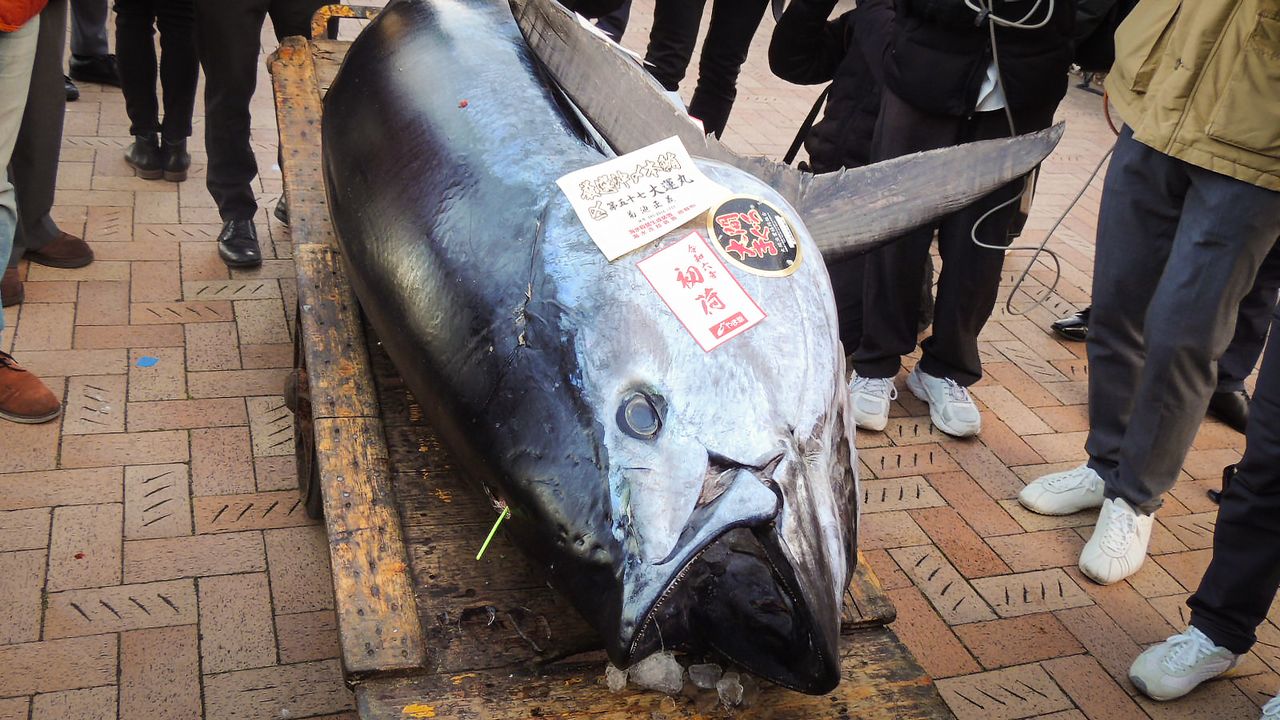
King of the New Year: Ōma Tuna on Top of Toyosu Auction Again
Guideto Japan
Economy Food and Drink- English
- 日本語
- 简体字
- 繁體字
- Français
- Español
- العربية
- Русский
Before the 2024 New Year auction, held on January 5 at the Toyosu Market in Kōtō, Tokyo, a moment of silence was observed for the victims of the Noto Peninsula earthquake four days earlier. Followed by a speech by market officials and the customary ippon-jime celebratory clapping, the auction began promptly at 5:10 am. The first sale was made one minute later as a rush of excitement took over the facility. A 238-kilogram bluefin tuna from Ōma had sold at over ¥114.24 million, more than tripling the previous year’s ¥36 million price. This was also the first time in four years that a single specimen surpassed ¥100 million. Sold by the major wholesaler Yamayuki, the fish was to be served at the renowned sushi restaurant Ginza Onodera. This is the fourth time in a row that Yamayuki and the Onodera Group have partnered to secure the highest-profile tuna available on the first day of bidding at Toyosu.
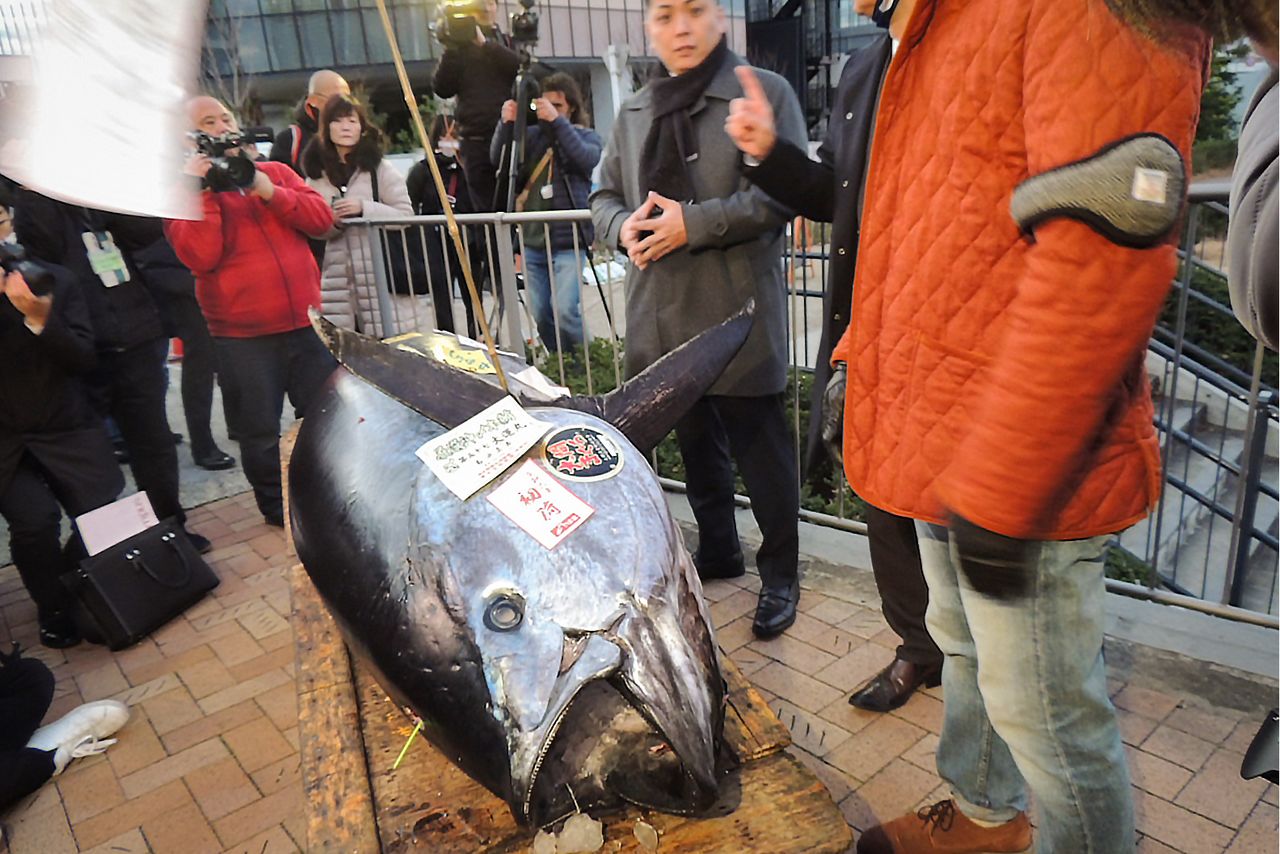
The press views the first tuna auctioned in 2024, which fetched a price equivalent to ¥480,000 per kilogram. (© Kawamoto Daigo)
Ōma Tuna Reign Supreme
The priciest tuna auctioned off was from Ōma in Aomori Prefecture in Japan’s northern Tōhoku region. The Ōma “brand” has become synonymous with tuna, dominating the annual Toyosu New Year auction in most recent years. Since 2000, the tuna fetching the highest bid has generally come from this region, although Ōma’s offerings were bested by Nagasaki Prefecture’s Iki in 2006 and Hokkaido’s Toi in 2011. This is, however, the thirteenth year in a row that Ōma has taken the crown.
The highest price to date was ¥333.6 million for a 278-kilogram specimen offered in 2019. Won by Kiyomura, which operates the Sushi Zanmai chain, this was the first New Year’s auction after the market’s move from its traditional Tsukiji site to Toyosu. This was likely a special celebratory price. Including 2019 and 2024, on four occasions bidding has exceeded ¥100 million yen. All specimens came were from the Ōma region.
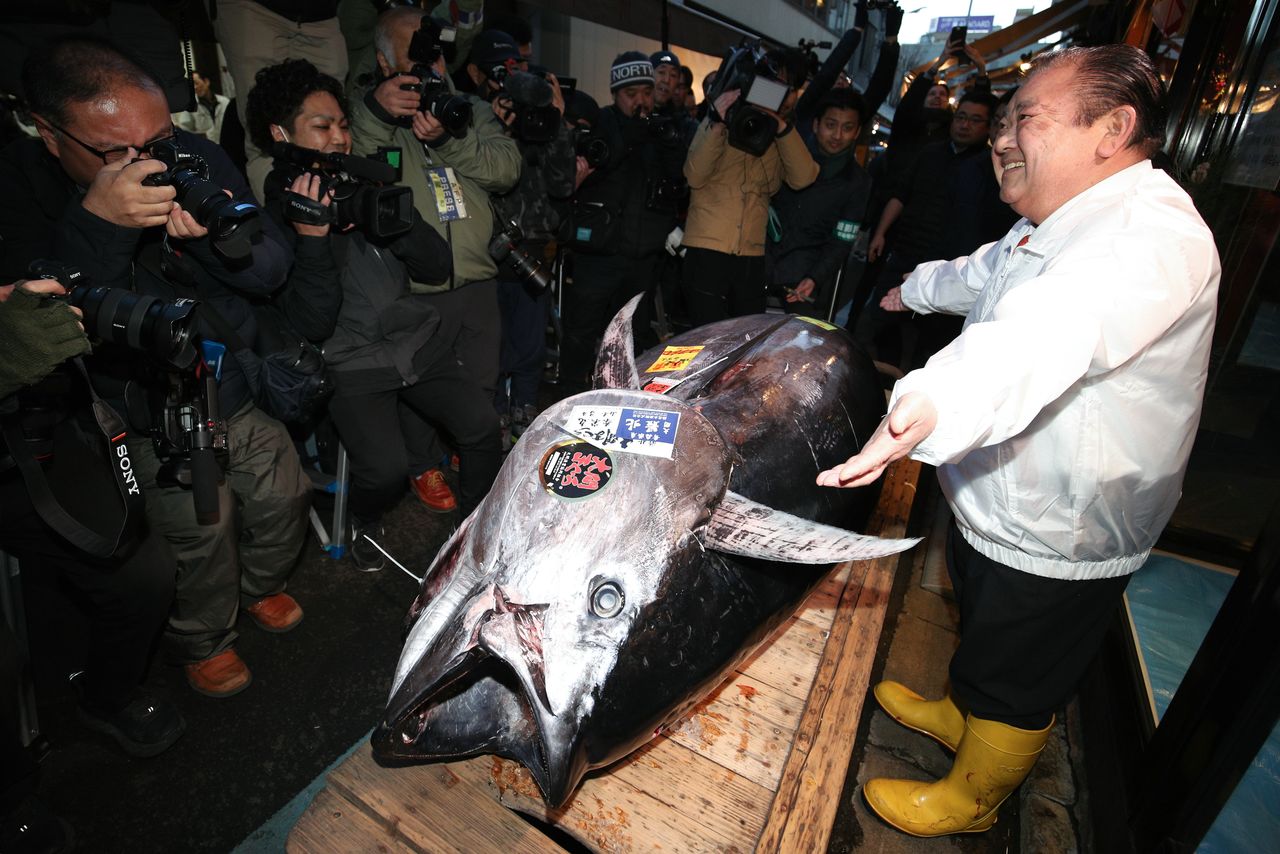
The highest bid of the 2020 auction went to Sushi Zanmai for a 276-kilogram fish selling for ¥193.2 million. At right is Kimura Kiyoshi, president of Kiyomura, which operates the sushi chain. (© Jiji)
The best tuna from all over Japan are sold at Toyosu, including those that land at ports on the Shimokita Peninsula and Hachinohe (both also in Aomori), Toi on the opposite coast from Ōma in southern Hokkaidō, and Kesennuma (Miyagi Prefecture).
While Ōma tuna do not automatically fetch the highest bids in the daily auctions, the brand is the uncontested king for the New Year’s bidding. However, in 2023, a director of an Ōma fisheries company was convicted of “concealing catches” by not reporting the total catch at port. Despite worries that the brand would be damaged, the result of this year’s New Year’s auction seems to have allayed these fears.
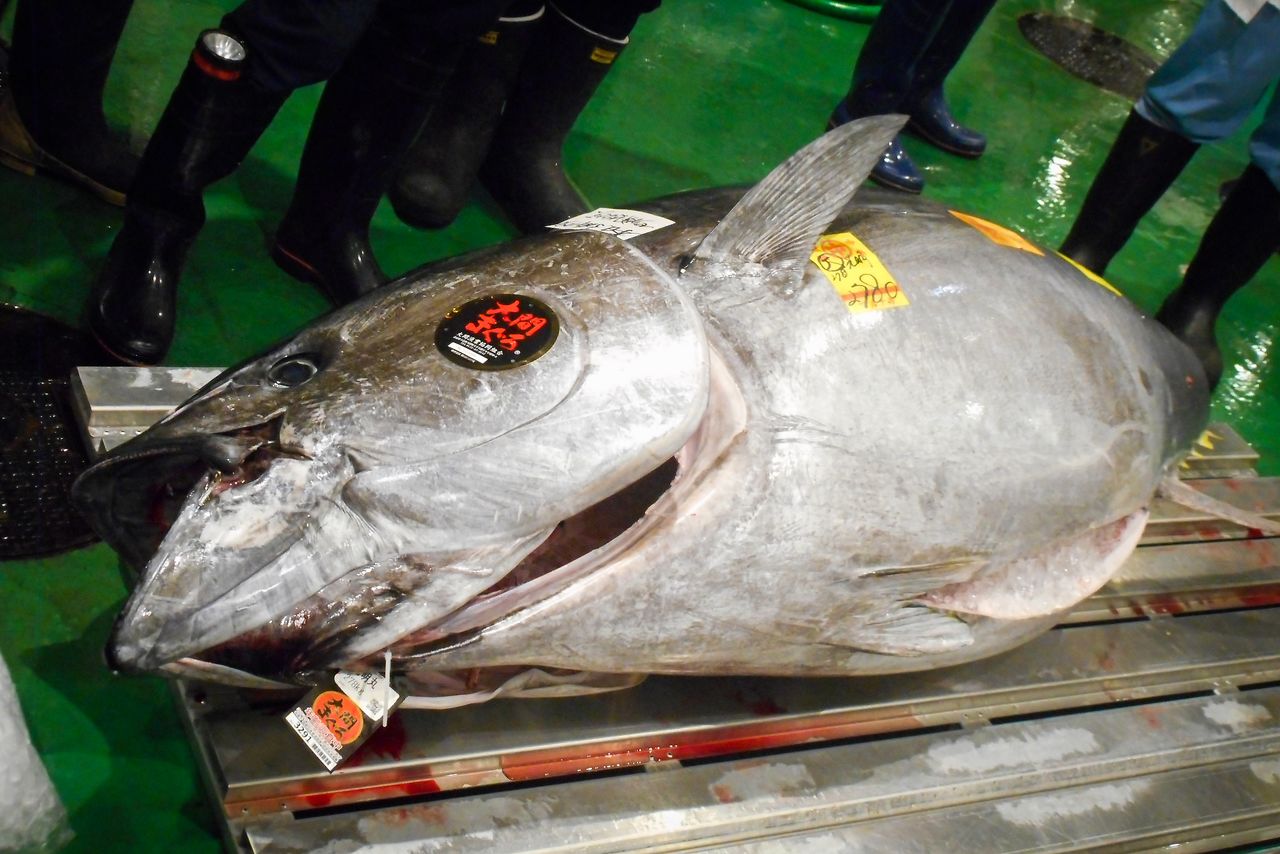
Tuna on display at Toyosu. The “Ōma Tuna” label on the fish’s cheek is a sign of the highest quality. (Courtesy Toyosu Market)
Ōma’s Exceptional Ōtoro and Chūtoro
I went to Ōma in mid-December to conduct some on-the-ground research about the state of the tuna fishing industry in the region and the reasons for its enduring dominance. A cold wind blows over Cape Ōma, at the northernmost tip of Honshū, a place with harsh winters and temperatures that plummet well below zero. It sits along the Tsugaru Strait that connects the Sea of Japan to the Pacific Ocean, and is where the warm Kuroshio current, which flows to the northeast along Japan’s Pacific coast, mixes with the cold Oyashio, passing southwest from Kamchatka toward Hokkaidō. This creates a plankton-rich environment that attracts small fish and squid to the area, much to the delight of tuna that feed off them.
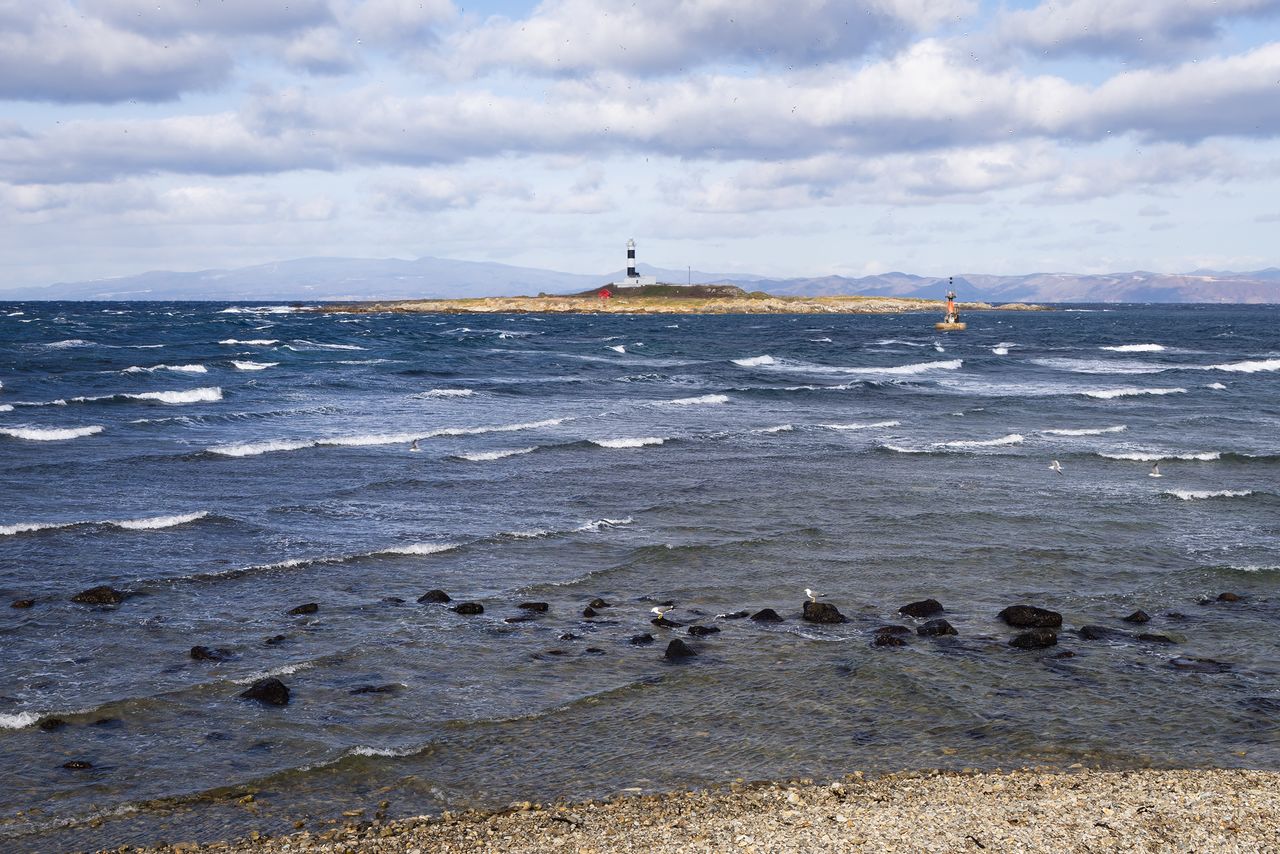
View of the Tsugaru Strait from Cape Ōma at the northern end of the Shimokita Peninsula. The land area in the background behind the Cape Ōma Lighthouse (Benten Island) is the city of Hakodate, Hokkaidō, where the Toi fishing port is located. (© Nippon.com)
Pacific Ocean tuna migrating patterns bring them north to the Tsugaru Strait from late summer to January. As fish store plenty of fat when seawater temperatures drop, Ōma tuna are ripe for fishing from the end of the year to the New Year. For this reason, Toi in Hakodate, Hokkaidō, on the opposite shore is also a high-quality source of tuna. Numerous different fishing interests benefit from this, including those operating out of Ōhata, Onoppe, and Shikkari on the Shimokita Peninsula, Minmaya on the Tsugaru Peninsula, and Hakodate and Toi on the opposite shore from Aomori in Hokkaidō.
However, an auctioneer from Ōma working at the Toyosu Market tells me that “we have established an excellent reputation at Toyosu because of our onboard procedures to deliver the fish to the market in the best condition. This includes live-tightening, bleeding, and our technique of gutting the fish and packing them with ice to keep them as fresh as possible. We also have a larger quota than other areas due to the high tuna population; there are probably no other areas that can replace Ōma in terms of production.”
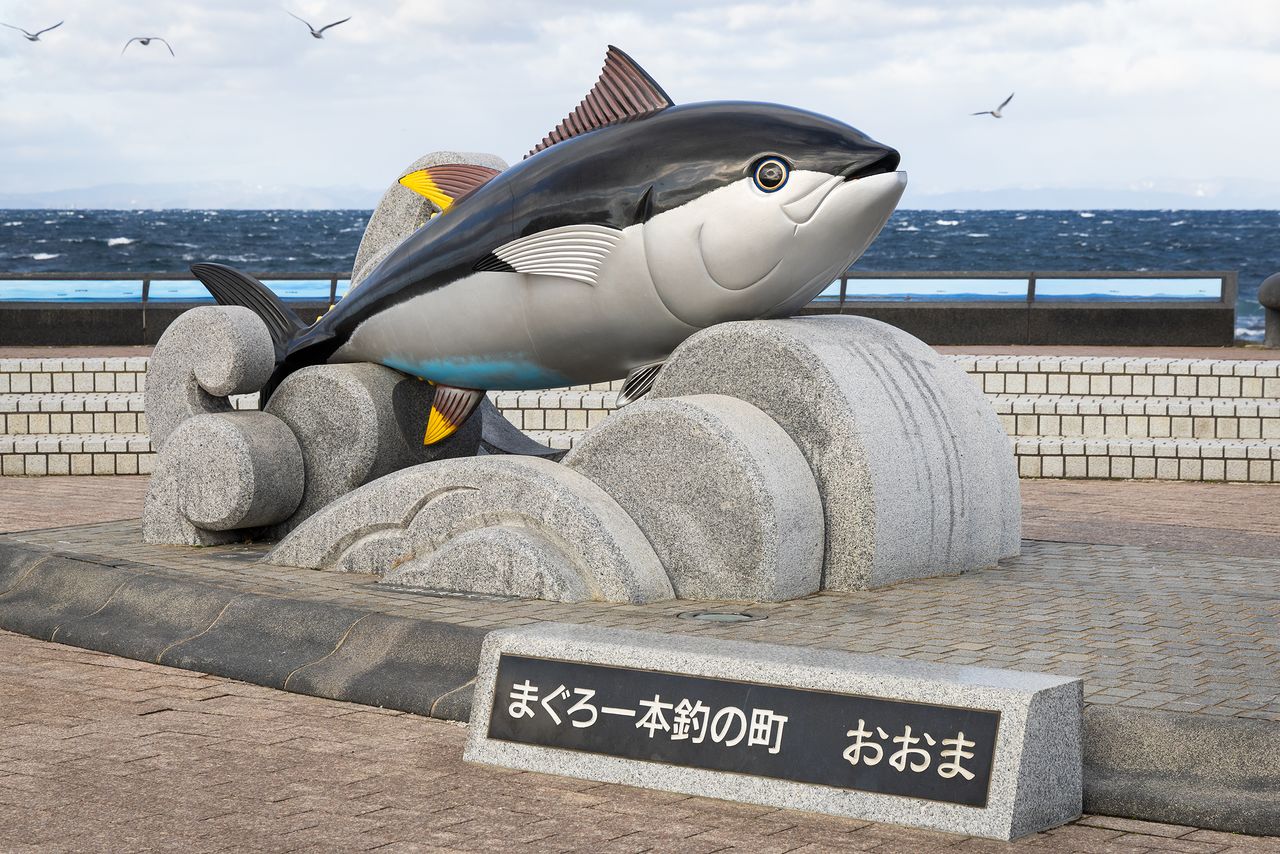
The above sculpture at Cape Ōma is a life-size reproduction of a 400-kilogram tuna landed in the area. (© Nippon.com)
Quotas Necessary, But Dampen Fishing Spirit
Arriving at Ōma Port a little after 11:00 am, I found the area quiet. Due to strong winds, many small boats were still anchored at the wharf and there was no sign of life. Someone from the fishing cooperative told me that boats that land tuna usually return to port between midday and early evening. Due to the bitter coldness of the previous afternoon, most boats had refrained from setting out. This person continued, “Around the New Year and especially on January 3 and 4, some boats will try their luck to land a tuna, hoping for good fortune. If they manage to load it onto a truck on the morning of January 4, they will make it just in time for the traditional New Year auction at Toyosu on the next day. But in mid-December, few fishermen are willing to take the risk during such weather. Furthermore, they need to be mindful of not exceeding their catch quotas, so they may become conservative near the end of the year.”
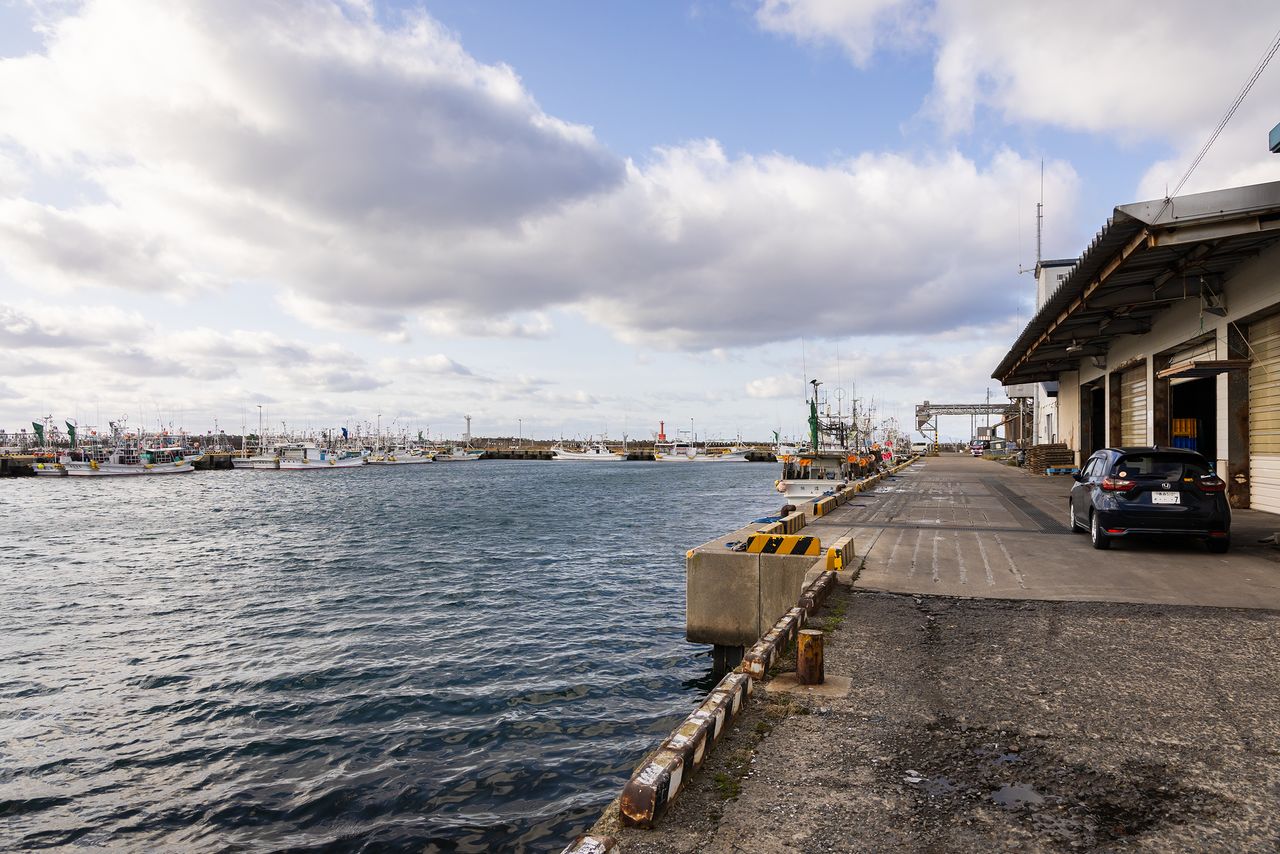
A deserted Ōma fishing port. When tuna are caught, they are lifted by crane from this quay onto land. (© Nippon.com)
This “catch quota” is fundamental to understanding the tuna fishing industry in Japan. Pacific bluefin tuna stocks have been particularly susceptible to overfishing. To allow stocks to recover, the Western & Central Pacific Fisheries Commission, an international body that monitors tuna catches, established a Total Allowable Catch for each country. As this also applies to coastal fisheries as well as the open ocean, this TAC is divided between the prefectures. These quotas are then in turn allocated to each fishing cooperative and then each fishing vessel based on the average “catch performance” over the last few years. That means even if there is a spike in the population in one area in one year, tuna cannot be landed in any massive quantity. Aomori’s TAC in 2023 was collectively 565 tons of tuna larger than 30 kilograms (the minimum weight per fish). Approximately 221 tons, or nearly 40%, was allocated to the Ōma Fishing Cooperative, more than 2.5 times the size of the next cooperative, the Minmaya Fisheries Cooperative (83 tons). Naturally, this increases the probability of the Ōma cooperative landing the most sought-after tuna in the New Year’s auction in any given year, and has only served to consolidate the Ōma brand.
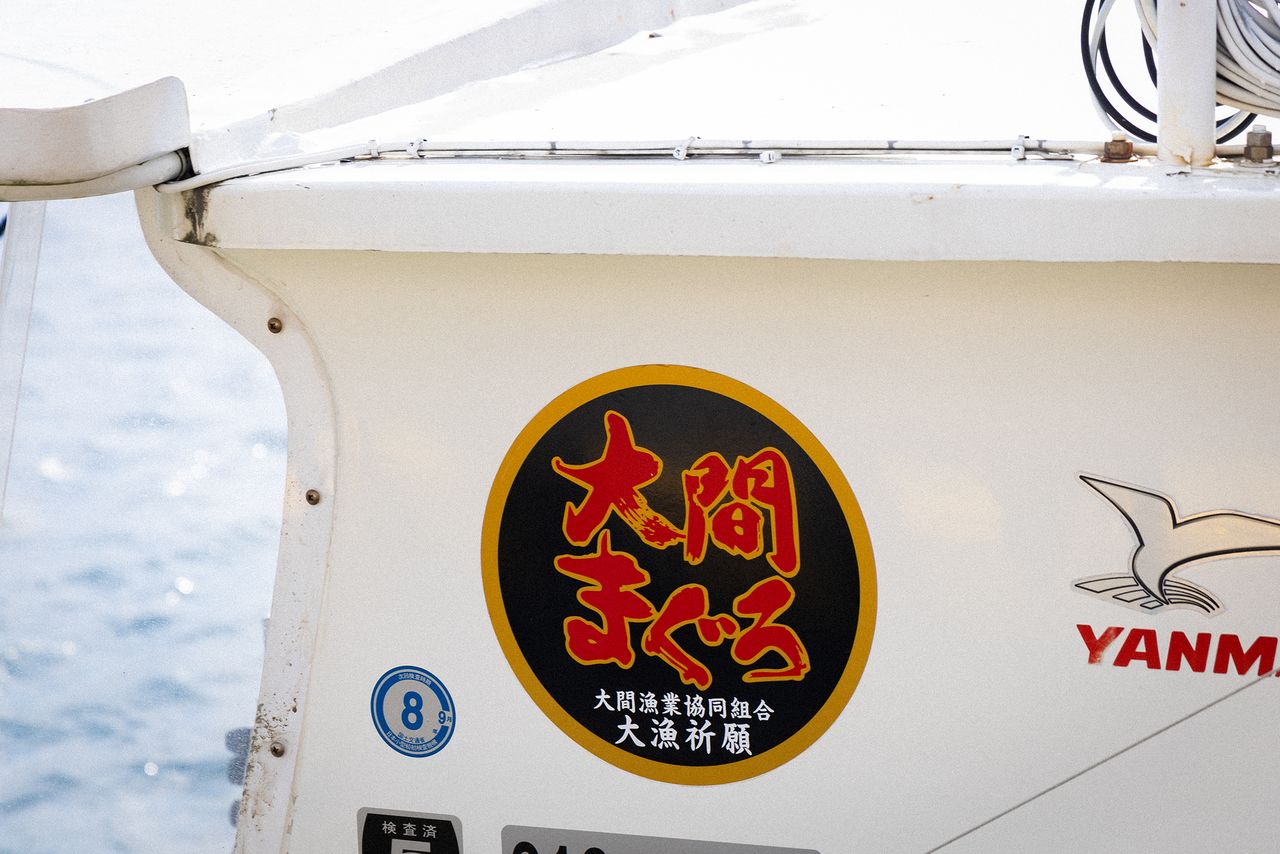
Japan’s top brand is proudly displayed on a fishing boat near Ōma. (© Nippon.com)
Plentiful Seas, But No Guaranteed Catch
There is more to the story than just those numbers, however. A few years ago, some Ōma fishing vessels struck out deeper into the Pacific Ocean due to tuna no longer coming to the Tsugaru Strait. One fisheries operator told me, however, “now there’s plenty of tuna close to the Ōma coastline.” Each fishing boat is still restrained by its allotted quota, however. One fisherman on a small boat complained bitterly that “In autumn, you can actually see tuna jumping out of the water from land. Because our boat is small and its quota low, though, we have to hold off until December, when tuna are at their fattiest and we can maximize the price we can fetch.”
These conflicting pressures led in the fiscal 2021 fishing year to a scandal in which Ōma fishers concealed some of their tuna catch from the fisheries association and prefectural authorities, selling directly to seafood processors under the table.
In July 2023, two fishing companies were found guilty and 22 fishermen and their associates were ordered to pay fines. Furthermore, the Aomori Prefecture and Ōma Fisheries Cooperative TACs were partially reduced.
With tuna becoming more abundant in the region, there is concern that fishers could again be tempted to flout resource management restrictions. The prefectural government is issuing corrective guidance, and the Ōma Fisheries Cooperative is desperate to regain trust. Another local fisherman told me: “Surveillance of the fishing industry around here has become tighter than ever. I doubt that this kind of side-selling will happen again.”
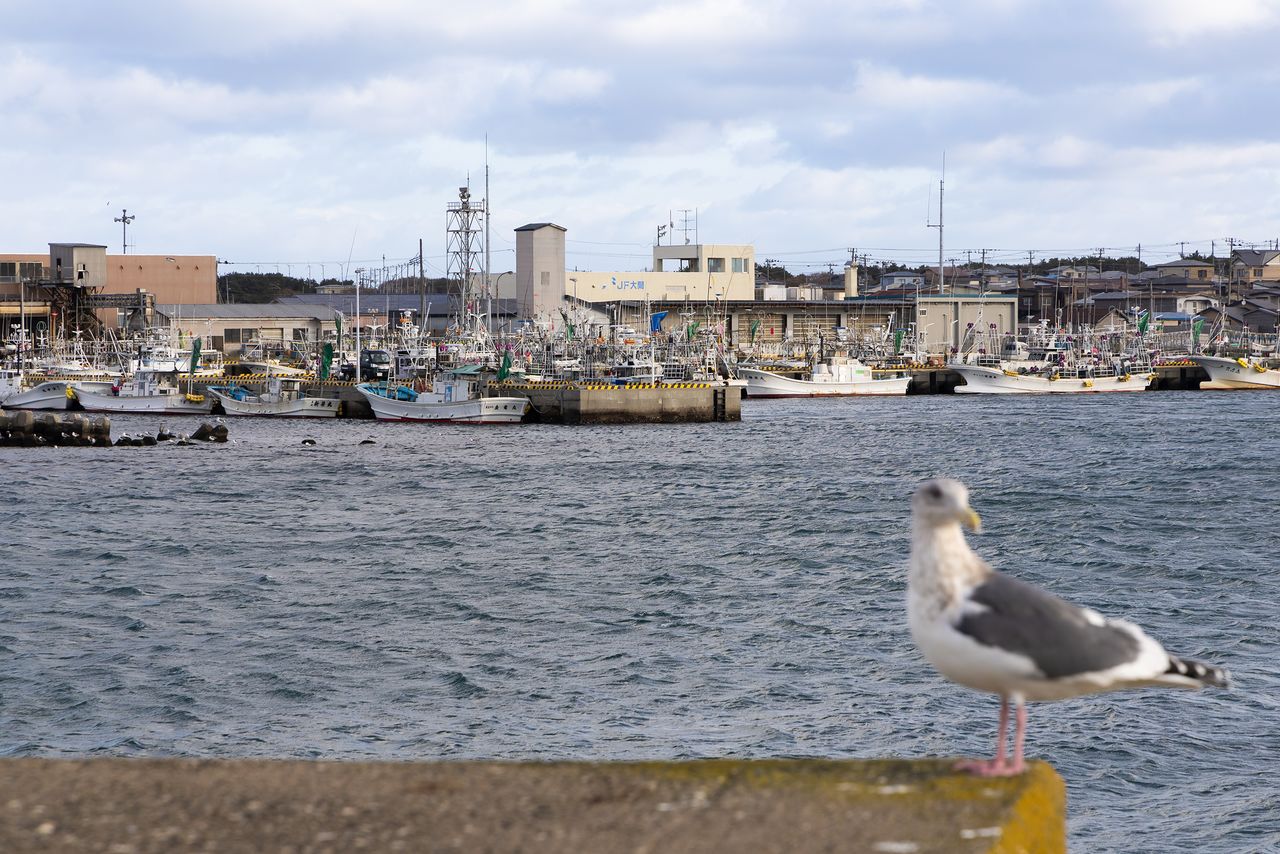
The white building (top center) houses the Ōma Fishing Cooperative. (© Nippon.com)
Tougher Times Ahead?
Naturally, catch quotas set in international law must be observed, but the situation on the ground was more complicated than expected. One story left a particularly strong impression on me. A fisherman from the Shimokita Peninsula near the Ōma fishing port was indignant, saying, “Ōma is doing fine because of its large tuna quota, but the situation at other ports is much more dire!” The Tsugaru Strait is also a fishing ground for squid, and because of greatly reduced squid catches in recent years, some fishers want to make up for this by focusing on tuna instead—an option left closed off due to the quotas. A particular issue is that tuna are increasing so rapidly in the area that they are putting the stocks of squid at risk. Fishermen have no choice but to endure watching uncatchable tuna feast on their own targets right before their eyes.
Fisherman who purchased vessels just before the introduction of TACs were in a particular bind, as they received no quota due to it being based on past performance. They lamented that, unless new rules are made, they may have to give up their boats. While resource management measures and quotas are essential, they do have the impact of precluding new entrants to the market and industry. With Japan’s fishing workforce aging rapidly, this could affect the long-term viability of the industry and training of younger generations.
All this said, with tuna stocks showing some recovery in the area, operational methods being improved, and a gradual increase in quotas potentially on the horizon, all is not lost. The challenge continues of trying to find a balance between resource management, ensuring the maintenance of a vital fishing industry, and delivering the finest tuna to consumers.
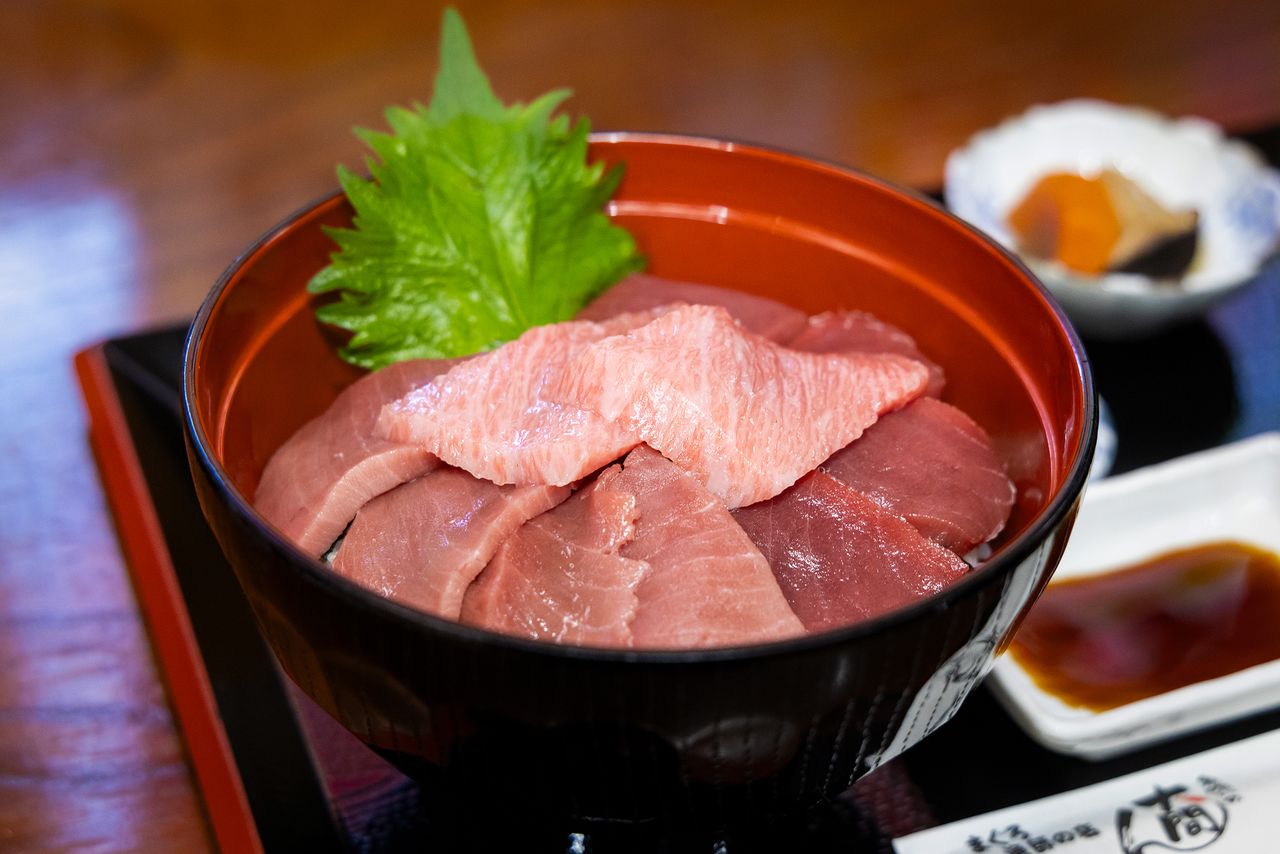
Tuna on rice in Ōma. With the fat of the highest quality, it melts in the mouth and is devoured in an instant. (© Nippon.com)
(Translated from Japanese. Banner photo: January 2024’s finest tuna. © Kawamoto Daigo.)